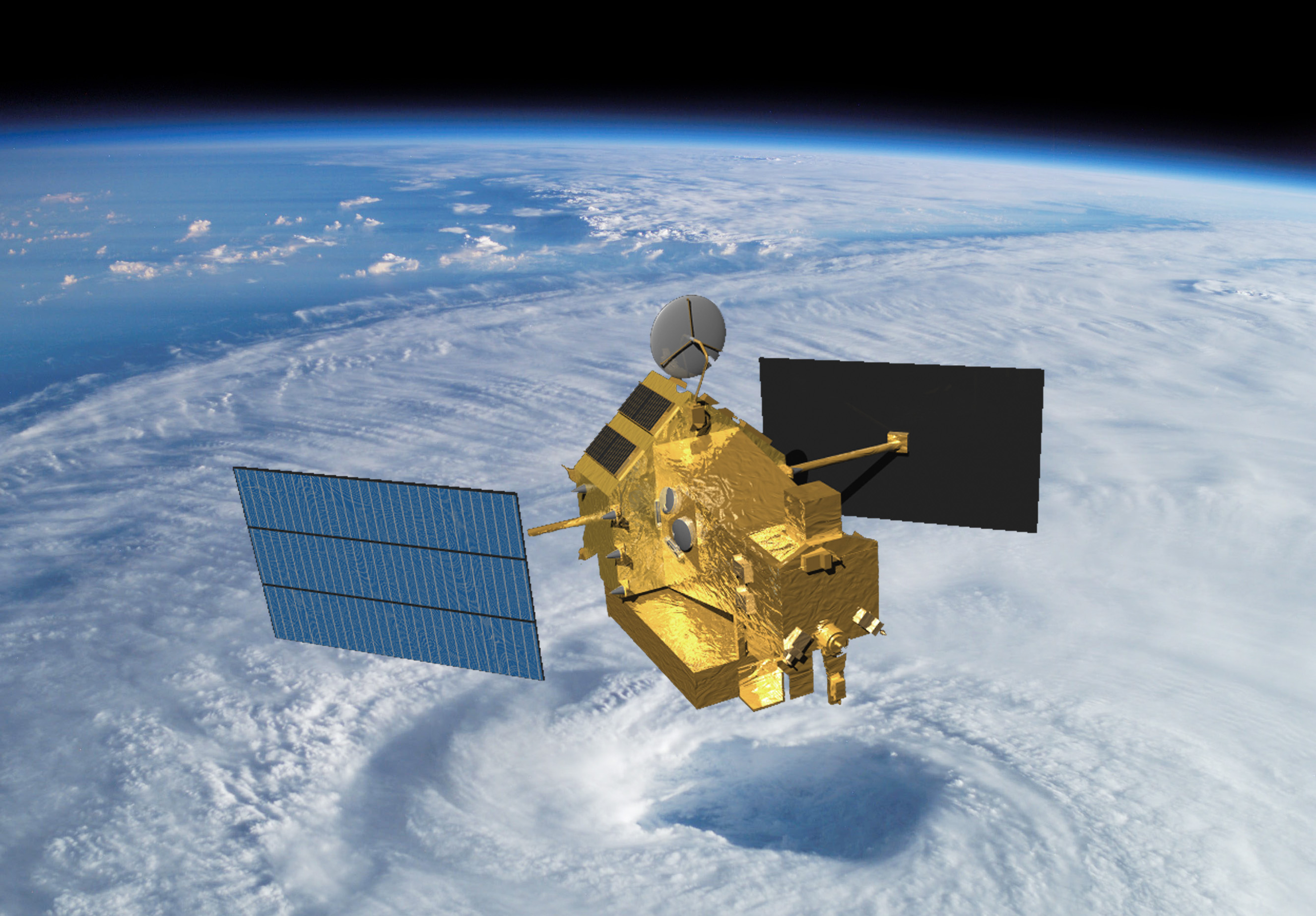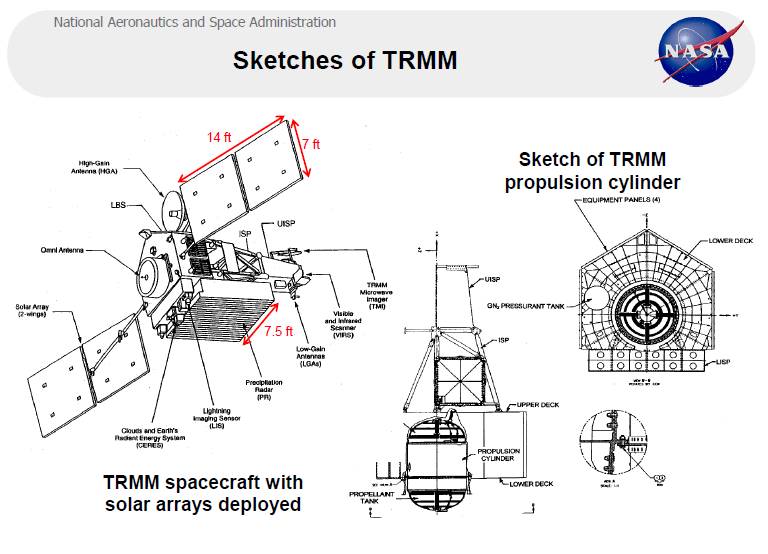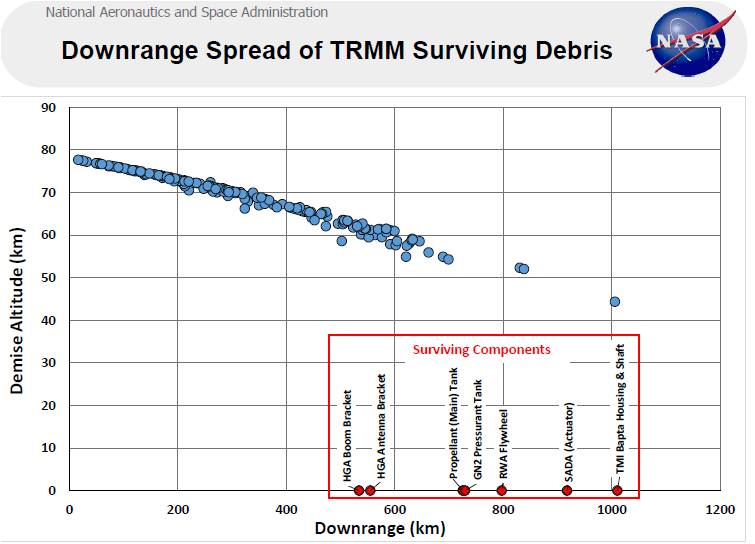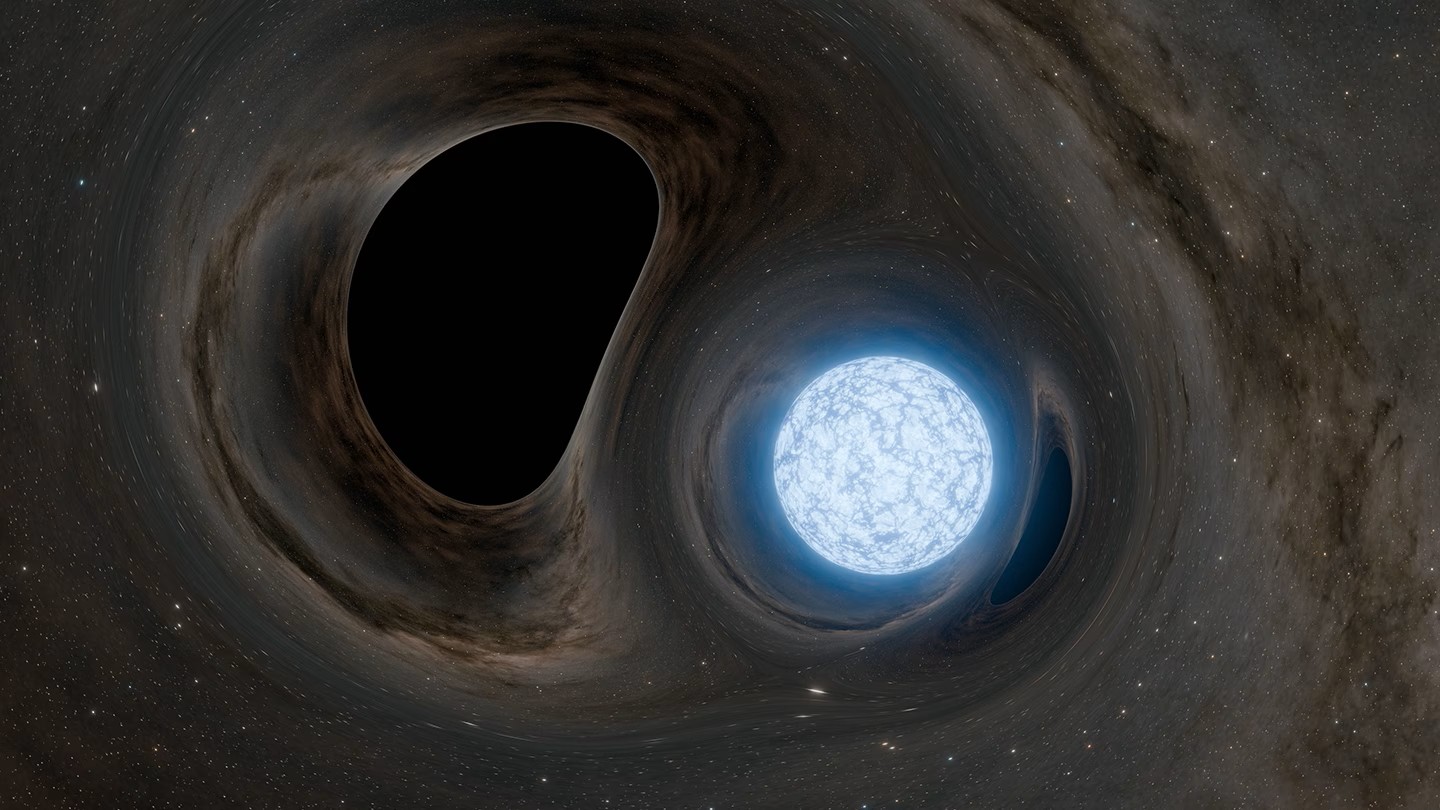
Dead Satellite Will Fall Out of Space on Tuesday

A satellite built by NASA and Japan to track rainfall on Earth is falling out of space and expected to meet its fiery doom during an uncontrollable death dive on Tuesday (June 16).
The satellite, called the Tropical Rainfall Measuring Mission (TRMM), was built by NASA and the Japan Aerospace Exploration Agency (JAXA) to measure the amount of rainfall on Earth for weather and climate research. Currently, the TRMM satellite is expected to fall to Earth somewhere over the Earth's tropical regions on Tuesday at 12:02 a.m. EDT (0402 GMT), according to a NASA update today (June 15).
"Due to natural variations in the near-Earth environment, a precise time and location of where spacecraft will re-enter cannot be forecast," NASA officials wrote. [The 6 Biggest Spacecraft to Fall Uncontrolled from Space]
About 12 pieces of space debris from the nearly 3-ton satellite are expected to survive the plunge through Earth's atmosphere and reach the surface. The chance that one of these pieces would strike someone is approximately 1 in 4,200, which is a relatively low chance, according to NASA's Orbital Debris Program Office.
As its name suggests, the TRMM satellite's orbit brings it over the tropics between 35 degrees North latitude and 35 degrees South latitude. The earth-watching satellite launched from Tanegashima, Japan on Nov. 27, 1997 on a planned three-year mission. TRMM ultimately lasted about 17 years before it was shut down on April 15 of this year.

Satellite debris expected

The "potentially hazardous objects" due to TRMM's fiery fall that are expected to survive include:
- Two propellant tanks,
- A nitrogen pressurant tank,
- Four Reaction Wheel Assembly flywheels,
- Two Solar Array Drive Assembly actuators,
- A High Gain Antenna (HGA) boom bracket,
- A TRMM Microwave Imager Bearing and Power Transfer Assembly housing and shaft.
The surviving objects are metallic (titanium alloys), nothing toxic. Total mass of objects expected to survive equates to 247 pounds (112 kilograms) – roughly four percent of the dry mass of TRMM.
Get the Space.com Newsletter
Breaking space news, the latest updates on rocket launches, skywatching events and more!
NASA advises that anyone who thinks they may have found pieces of the TRMM satellite should call their local authorities.
"The pieces of TRMM expected to survive re-entry are made of titanium or stainless steel. Although these materials are not toxic, they could have sharp edges and should not be touched or handled by private individuals," according to a NASA Frequently Asked Questions list.
Individual risk explained

According to the NASA Orbital Debris Program Office, the estimated human injury risk (updated in 2015) is roughly 1 in 4,200. One in 4,200 means that if the same re-entry were to occur repeatedly 4,200 times, the expectation is that that only one person on Earth would be harmed.
"Since the beginning of the space age in the 1950s, there has been no confirmed report of an injury resulting from re-entering space objects," NASA officials wrote in a statement.
TRMM smaller than the last NASA satellite to fall from space - the Upper Atmosphere Research Satellite - which plunged back to Earth in September 2011. During that previous satellite re-entry, NASA received no reports of debris surviving re-entry, agency officials said.
Due to TRMM's orbit, the chances of spacecraft debris harming human life or property is slim, although the exact location of the re-entry cannot be predicted. The U.S. Department of Defense and NASA are monitoring the decay and re-entry of TRMM. The official source of re-entry predictions for uncontrolled space objects is USSTRATCOM's Joint Space Operations Center (JSpOC).
Leonard David has been reporting on the space industry for more than five decades. He is former director of research for the National Commission on Space and is co-author of Buzz Aldrin's 2013 book "Mission to Mars – My Vision for Space Exploration," published by National Geographic, with a new updated paperback version to be released in May. Follow us @Spacedotcom, Facebook and Google+. Story published on Space.com.
Join our Space Forums to keep talking space on the latest missions, night sky and more! And if you have a news tip, correction or comment, let us know at: community@space.com.

Leonard David is an award-winning space journalist who has been reporting on space activities for more than 50 years. Currently writing as Space.com's Space Insider Columnist among his other projects, Leonard has authored numerous books on space exploration, Mars missions and more, with his latest being "Moon Rush: The New Space Race" published in 2019 by National Geographic. He also wrote "Mars: Our Future on the Red Planet" released in 2016 by National Geographic. Leonard has served as a correspondent for SpaceNews, Scientific American and Aerospace America for the AIAA. He has received many awards, including the first Ordway Award for Sustained Excellence in Spaceflight History in 2015 at the AAS Wernher von Braun Memorial Symposium. You can find out Leonard's latest project at his website and on Twitter.
